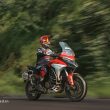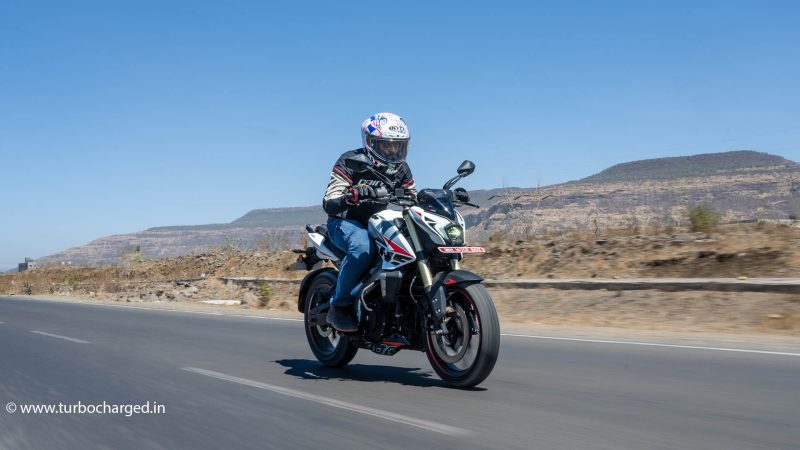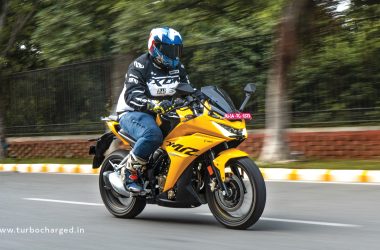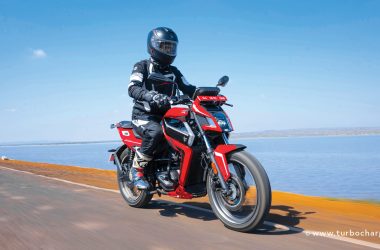It’s been 24 years since the Pulsar broke cover! That’s almost two and a half decades of the Pulsar nameplate not just surviving but thriving, with plenty of models spanning various engine capacities. All of them are bound by one mantra, a mantra that has intricately woven itself into the Pulsar DNA – Affordable Performance.
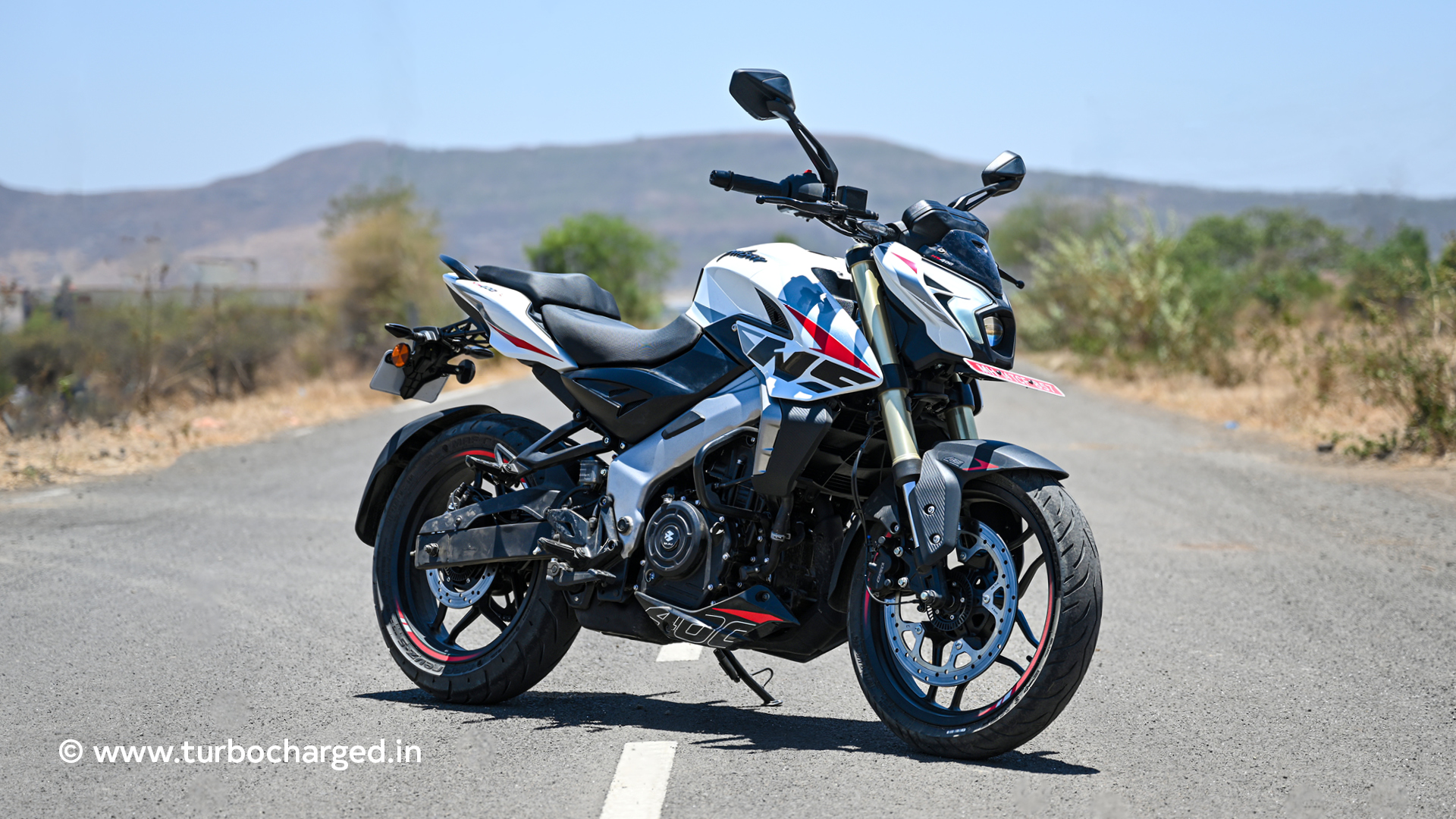
This affordable performance came with the help of (relatively) large-capacity powertrains – the right engine at the right time. The 180cc Pulsar came out when 100cc motorcycles were the norm and 150cc was considered the performance segment. The same was the case for the first-gen Pulsar 220 which also featured fuel injection for good measure. However Bajaj, for some reason, shied away from pushing the envelope in terms of cubic capacity despite having larger engines from KTM at its disposal. And when they did, they called it the Dominar and branded it as a stark departure from the Pulsar we knew and loved. Bajaj has always focused on consumer (read aam junta) demands, aligning their products accordingly, a strategic move that garnered success. The audience seems to have spoken and we finally get the Pulsar NS400Z.
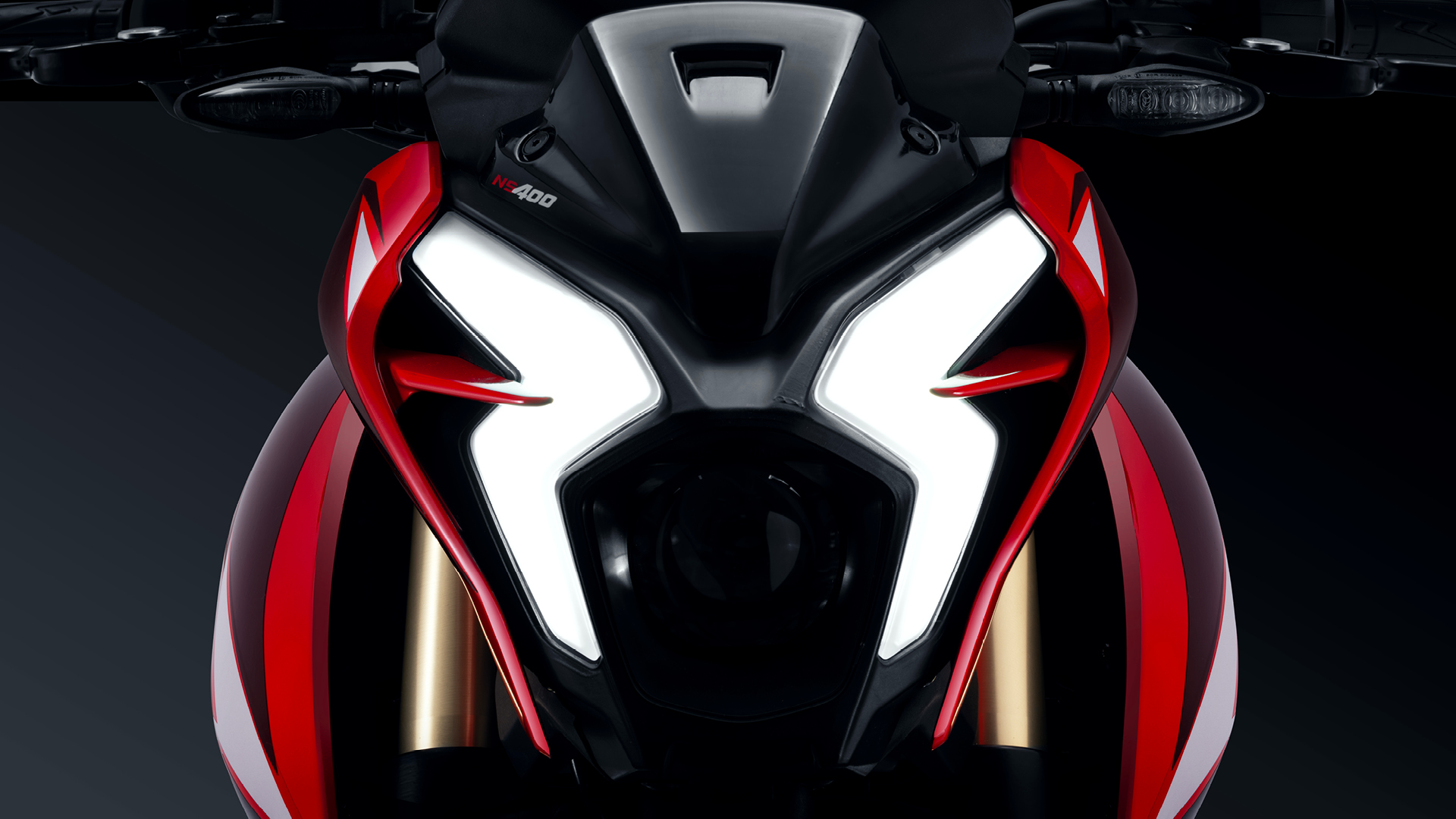
It looks like a Pulsar – a larger, brawnier, more premium Pulsar. The headlamp design looks striking and stands out thanks to the large twin DRLs. It borrows design cues from both the NS and Dominar models. The tank extensions are larger and sit flush with the fuel tank and radiator shroud. It looks like a Pulsar from the rear, with familiar LED tail lamps but with larger body panels that feature floating design elements. The gold-textured upside-down forks add a premium touch.
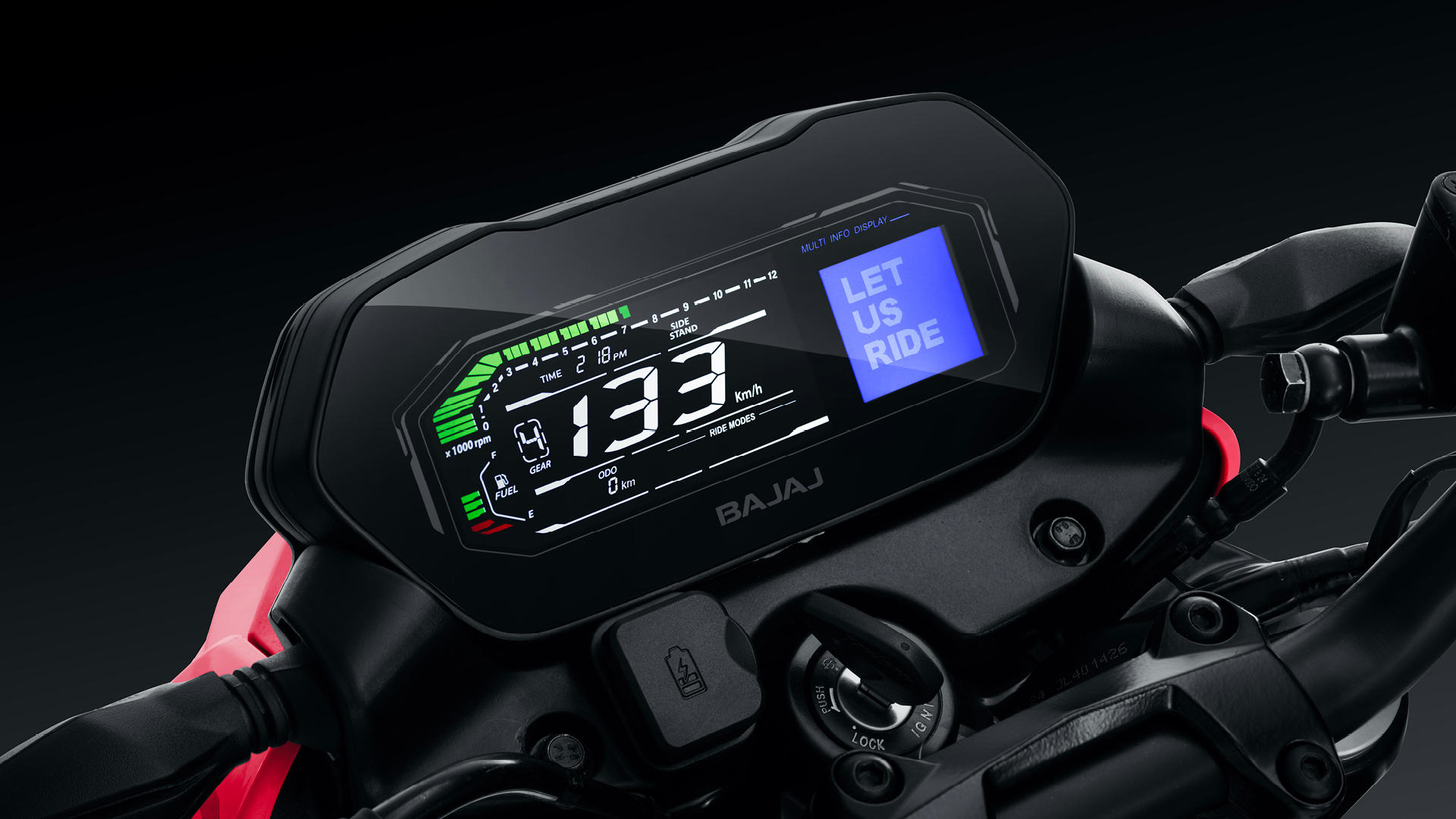
The premiumness is further accentuated with all LED lighting and a bi-LED projector headlamp. The one thing that does not sit well is the digital instrument console, especially at a time when smaller-capacity motorcycles offer colour TFT screens. While it does help keep costs low, it takes away from some of the premium feel. The screen feels dated and is crammed with information that’s difficult to read on the go, especially under bright sunlight. It does offer Bluetooth though that enables call, navigation and music controls. The motorcycle also gets ride-by-wire that unlocks four ride modes – Road, Rain, Sport and Offroad. These modes alter throttle response and dual-channel ABS intervention. You can switch off traction control in Sport and Offroad modes but there is no provision to switch off rear wheel ABS. Also, the Offroad mode here is unlike that on adventure tourers and is tuned for dirt roads.
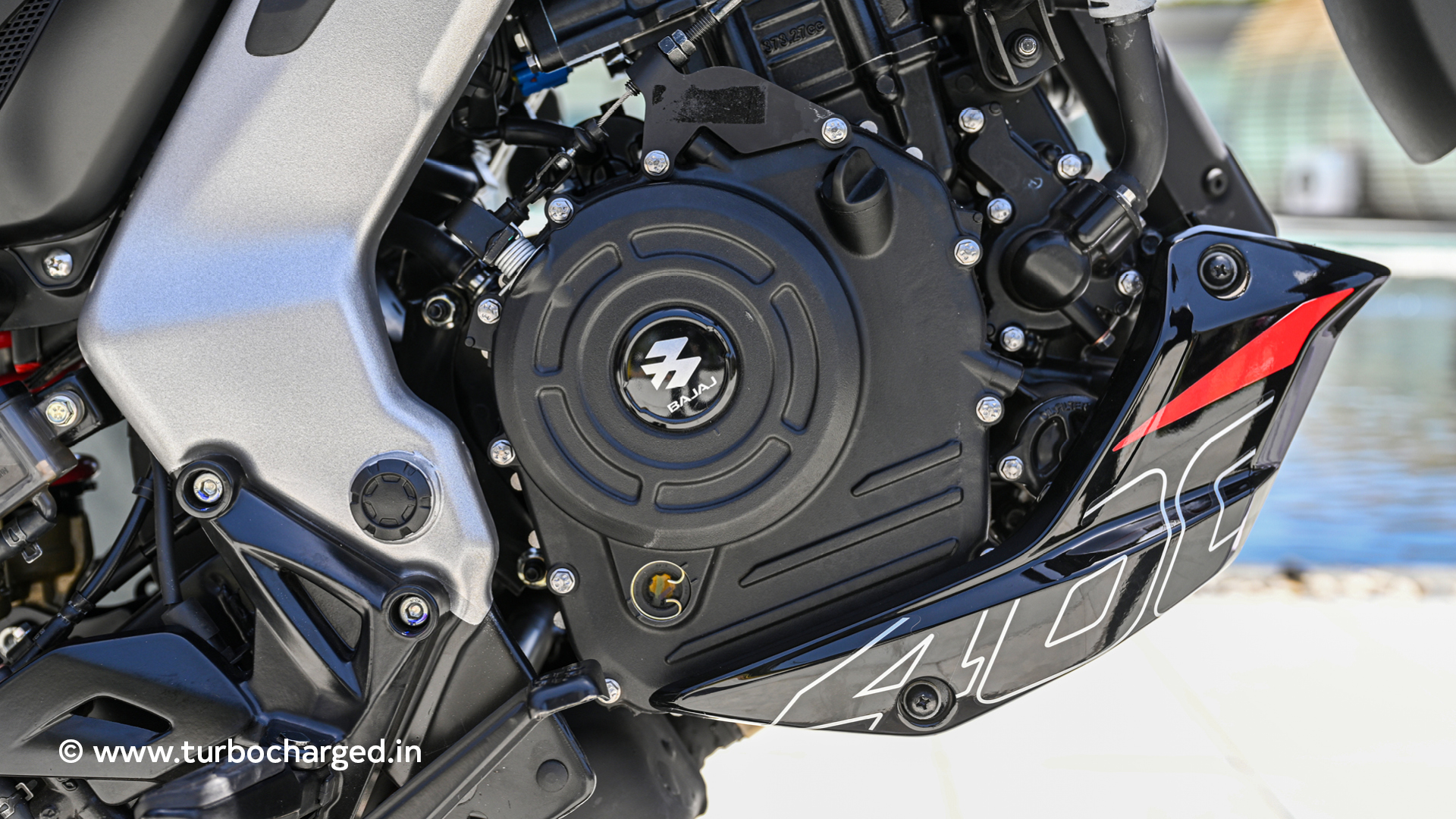
Bajaj has stuck with the 373cc liquid-cooled single-cylinder powertrain seen on the Dominar and previous generation KTMs instead of the new 399cc powertrain on the current KTMs and Husqvarnas. Besides the obvious cost benefits, it also helps current Pulsar riders to easily upgrade to the larger Pulsar, unlike the new KTM 390 Duke which requires a certain expertise to tame. The motor delivers 40PS at 8,500rpm and 35Nm at 7,000rpm of which 80 percent of torque is available 3,000rpm onwards. Like the Dominar, the motor is tuned for usable performance hence the comparatively low performance outputs at accessible RPMs. Interestingly, the Pulsar gets a larger 46-tooth sprocket which helps with initial acceleration and makes the NS400Z a sprightly motorcycle.
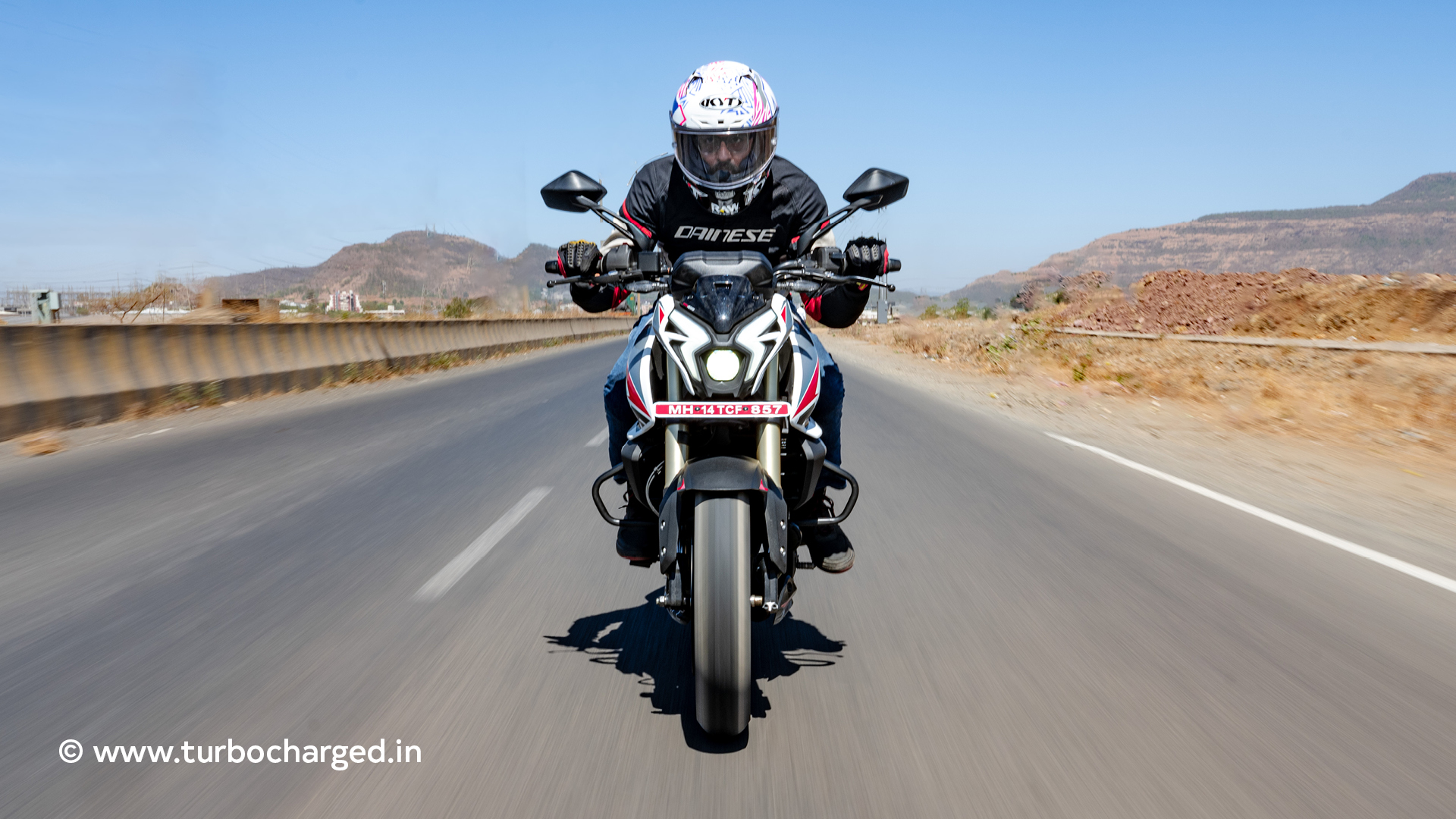
The motor has what I call a happy state of tune. It is eager to rev but at the same time does not feel as frenzied as the KTM. 0-60kmph comes up in a claimed 2.8 seconds while the run upto 100kmph takes 6.9 seconds.
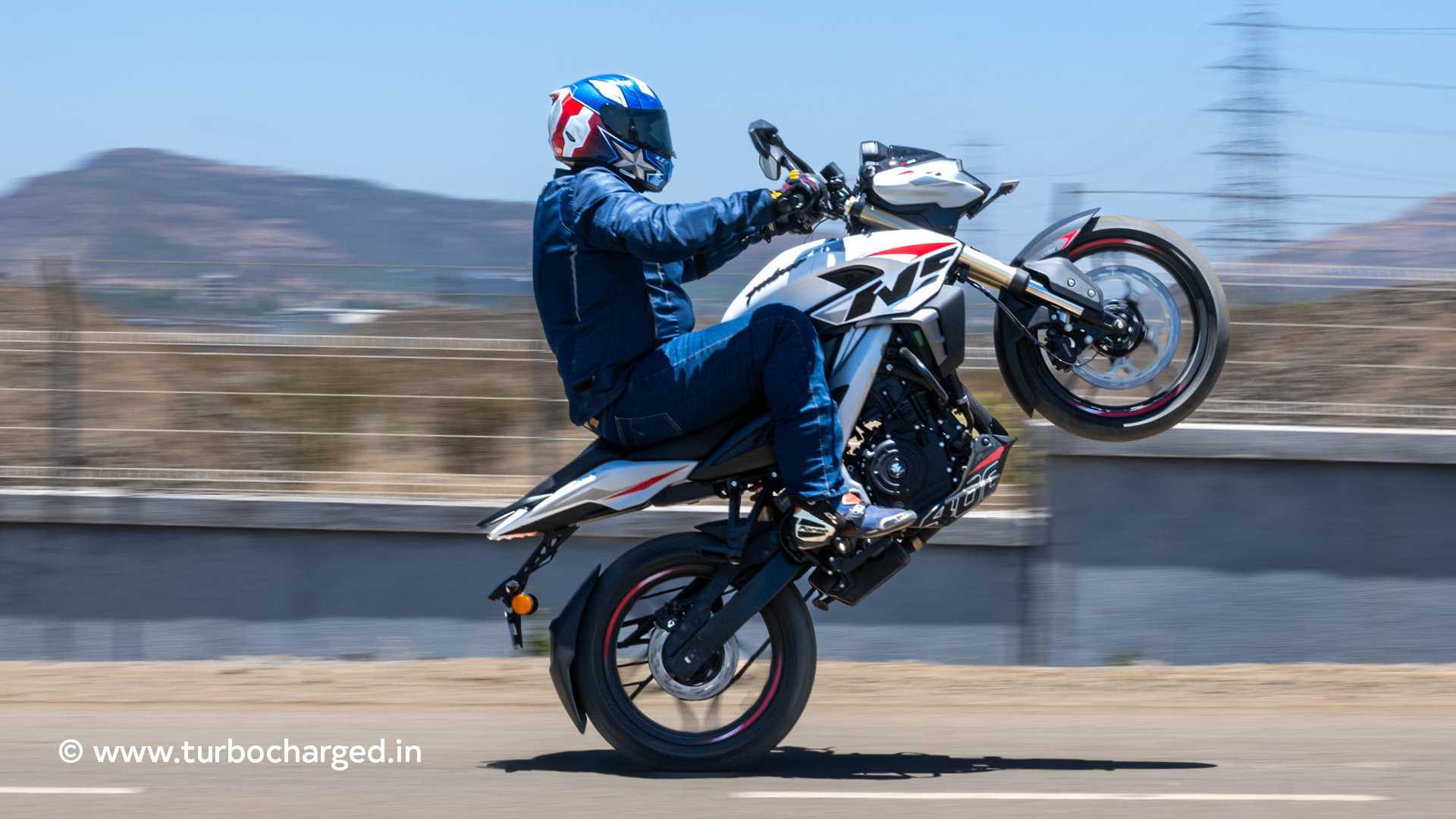
There are no sudden surprises when you whack the throttle open but a linear increase in acceleration that is safe for novice riders but at the same time energetic enough to keep experienced riders happy. Most of the performance is centred around the low and mid-range of the powerband and there is no point revving this motor beyond 9,000rpm. The clutch is light and the shifts are positive, aiding in the overall spirited riding experience.
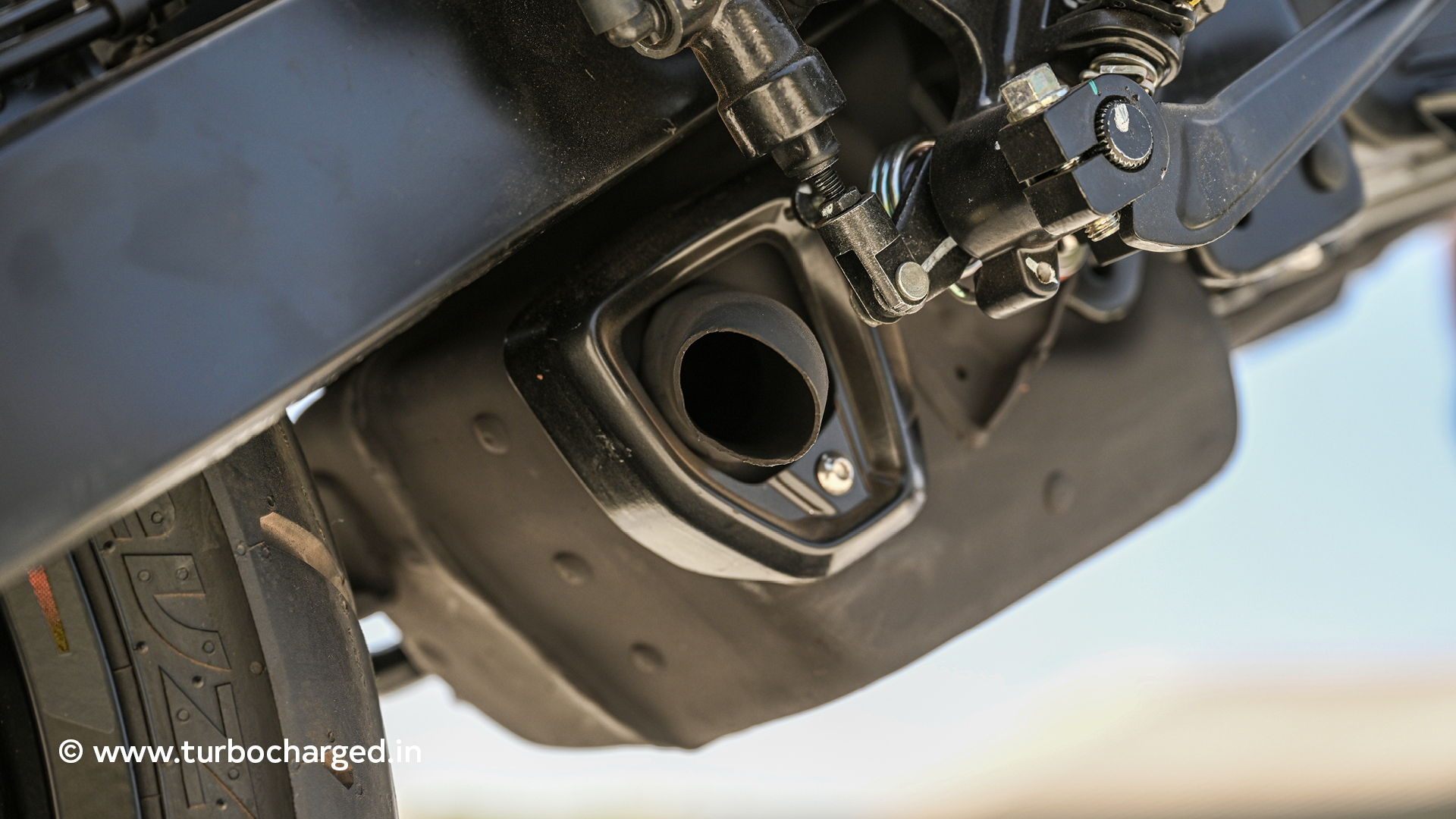
What disappoints is the refinement. There is a strong resonance between 3,000 to 4,000rpm which can be felt on the handlebar, fuel tank and footpegs. Thankfully it smoothens out post 4,000rpm allowing for a smooth ride experience at highway speeds. Bajaj claims a fuel efficiency of 28.5kmpl in internal tests which is decent given the performance on offer.
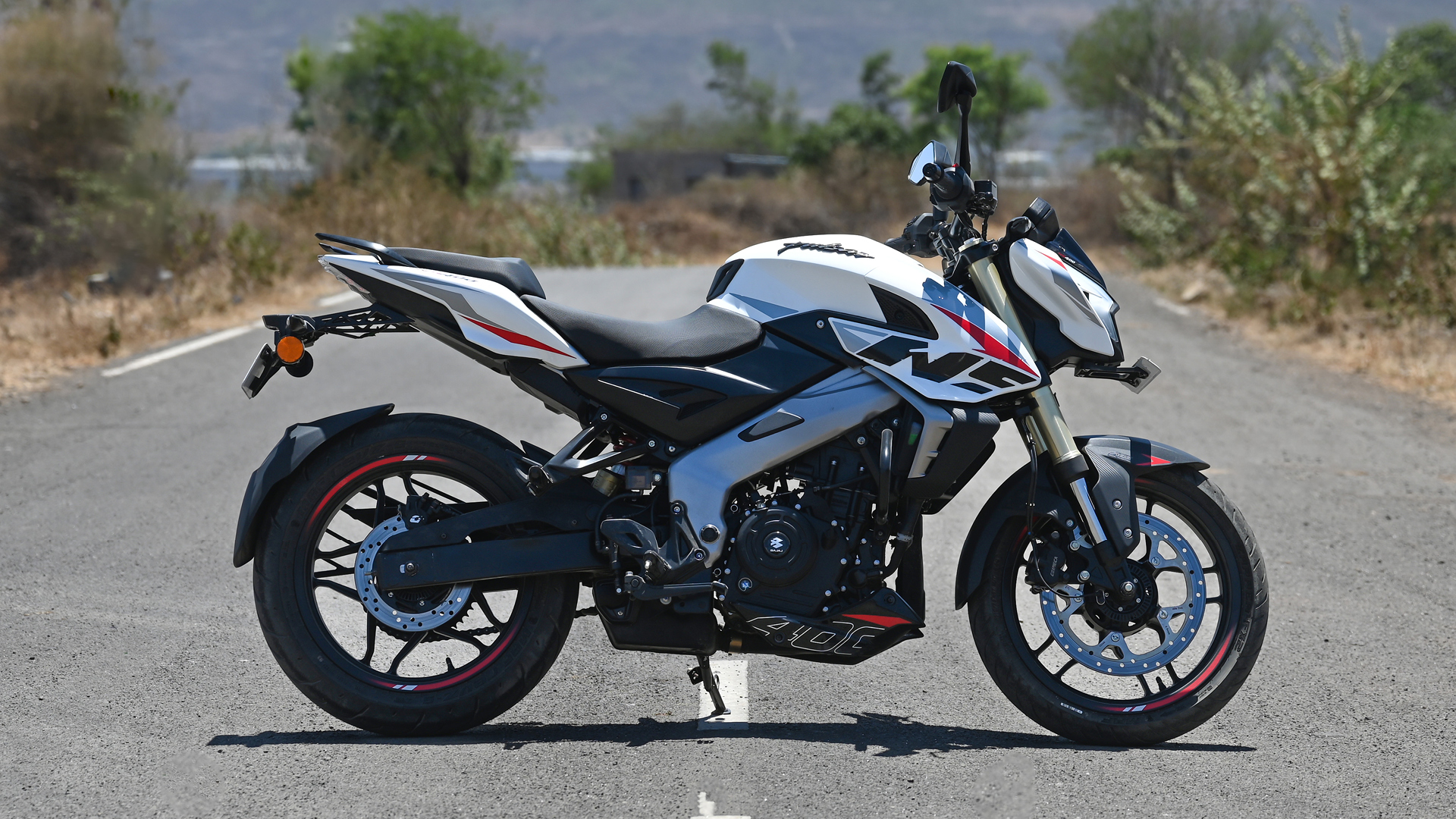
The motor is decently tractable, requiring minimal shifts to ride in the city. On the highway too, the overall gearing means you do not have to downshift often to overtake. On Bajaj’s Chakan test track, we managed to nudge past 160kmph on the main straight.
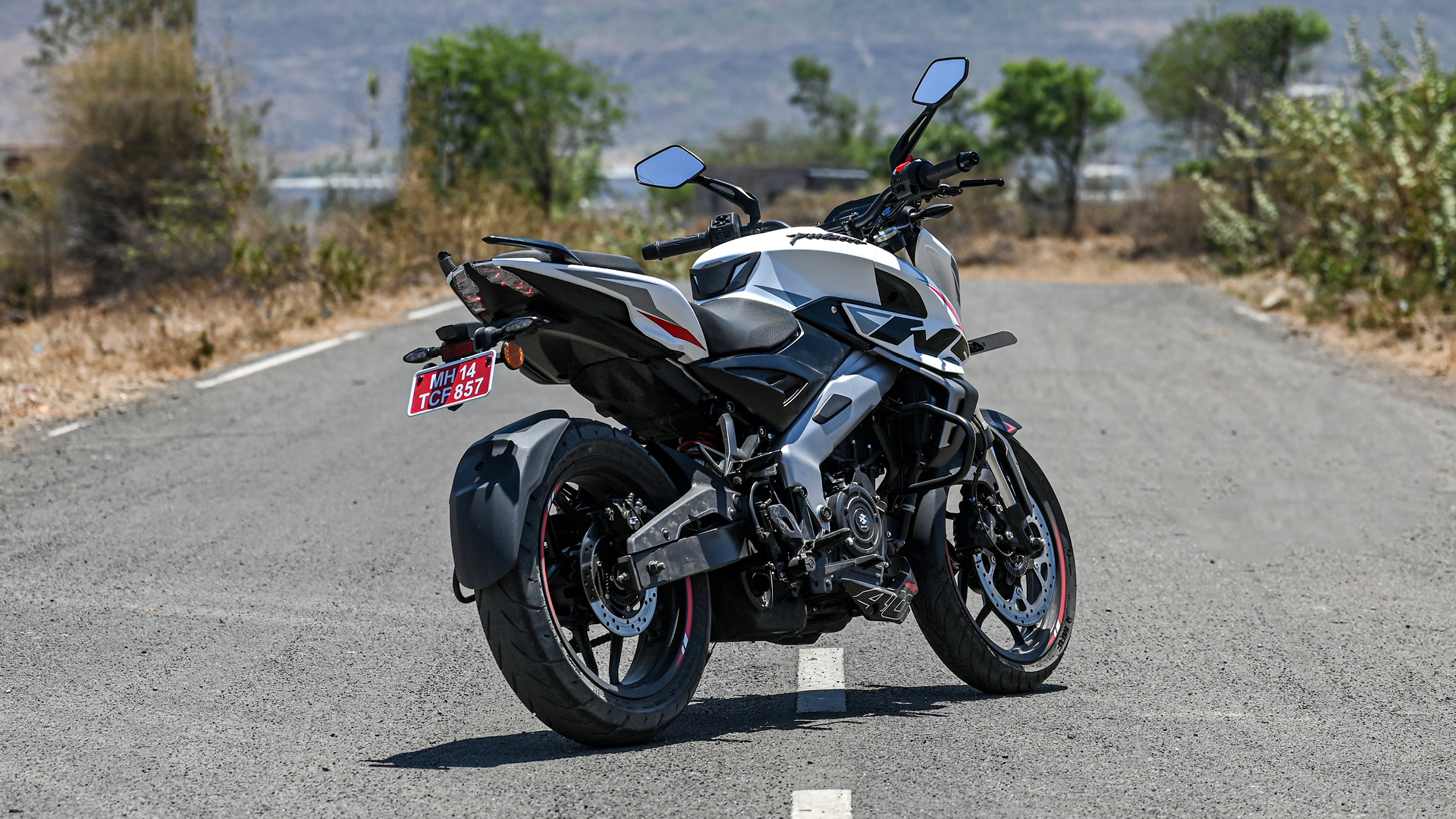
The NS400Z has upright ergonomics and a wide seat that’s comfortable enough to sustain long journeys. The suspension gets the job done but could do with a more absorptive ride as we found the rear to be too reactive on bad roads.
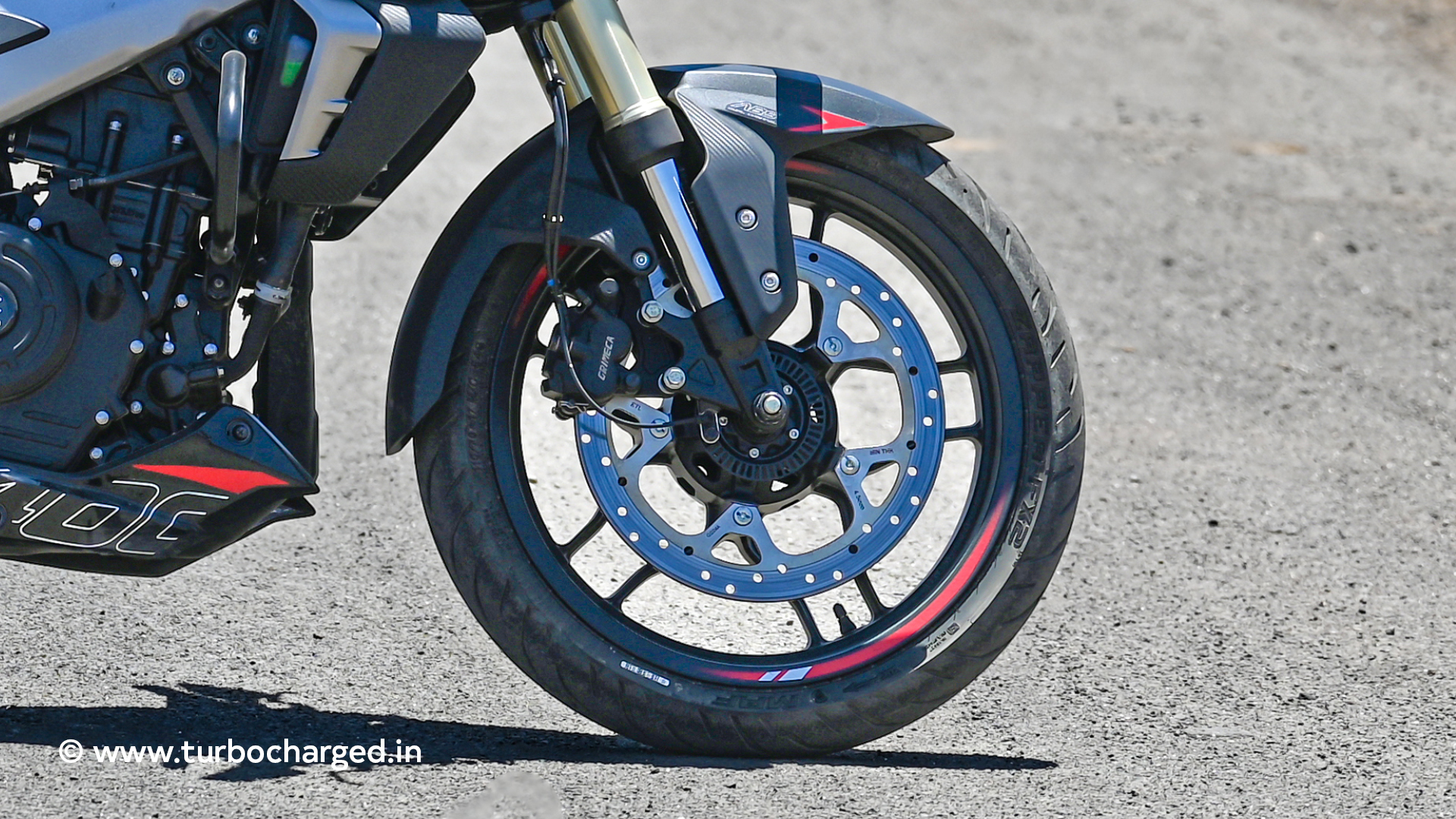
The frame borrowed from the NS200 has been reinforced given the extra performance and the suspension too has been tuned accordingly. The rake is one degree sharper than the NS200 while the wheelbase is 20mm shorter. These updates help the NS400Z turn in quicker and feel more agile on the move despite the additional 16 kilos weight (Kerb weight is 178kg).
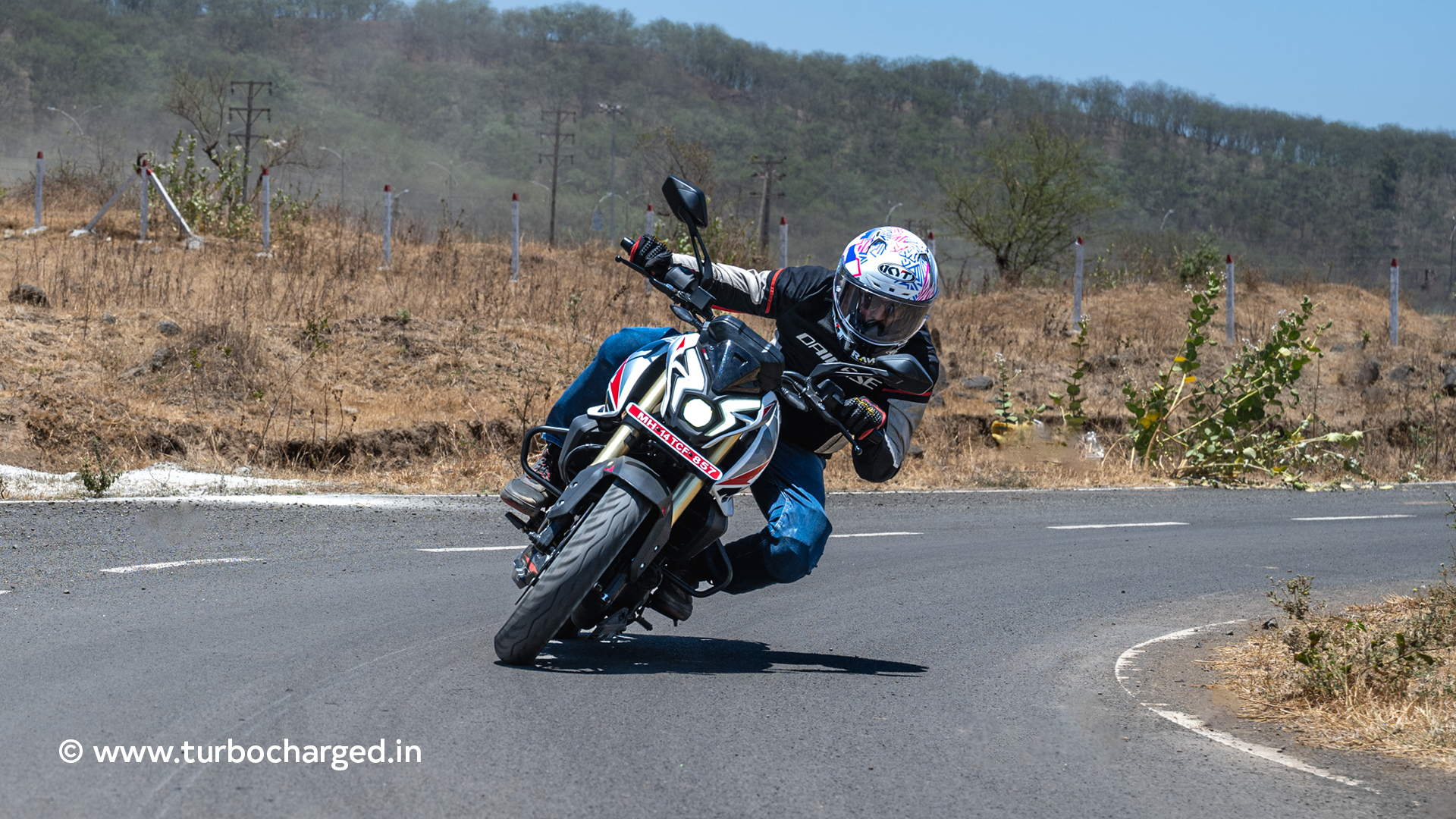
The NS400Z impresses with its eager dynamics and stability at speed. It is easy to ride thanks to the low 805mm seat height and light steering making it easier for the novice rider to get used to. The MRF Revz radials work well in most conditions save for extreme ones like on the track where they reach their limit quickly. That said, these offer ample grip for normal riding conditions. The brakes feature a fixed caliper layout unlike the Dominar 400’s radial setup, despite running a larger 320mm disc upfront. That’s been done to save cost and is absolutely fine. Save for the lack of a strong initial bite on the track, we didn’t find the brakes to be lacking anywhere else. The dual-channel ABS too works well with minimal intrusion under hard braking.
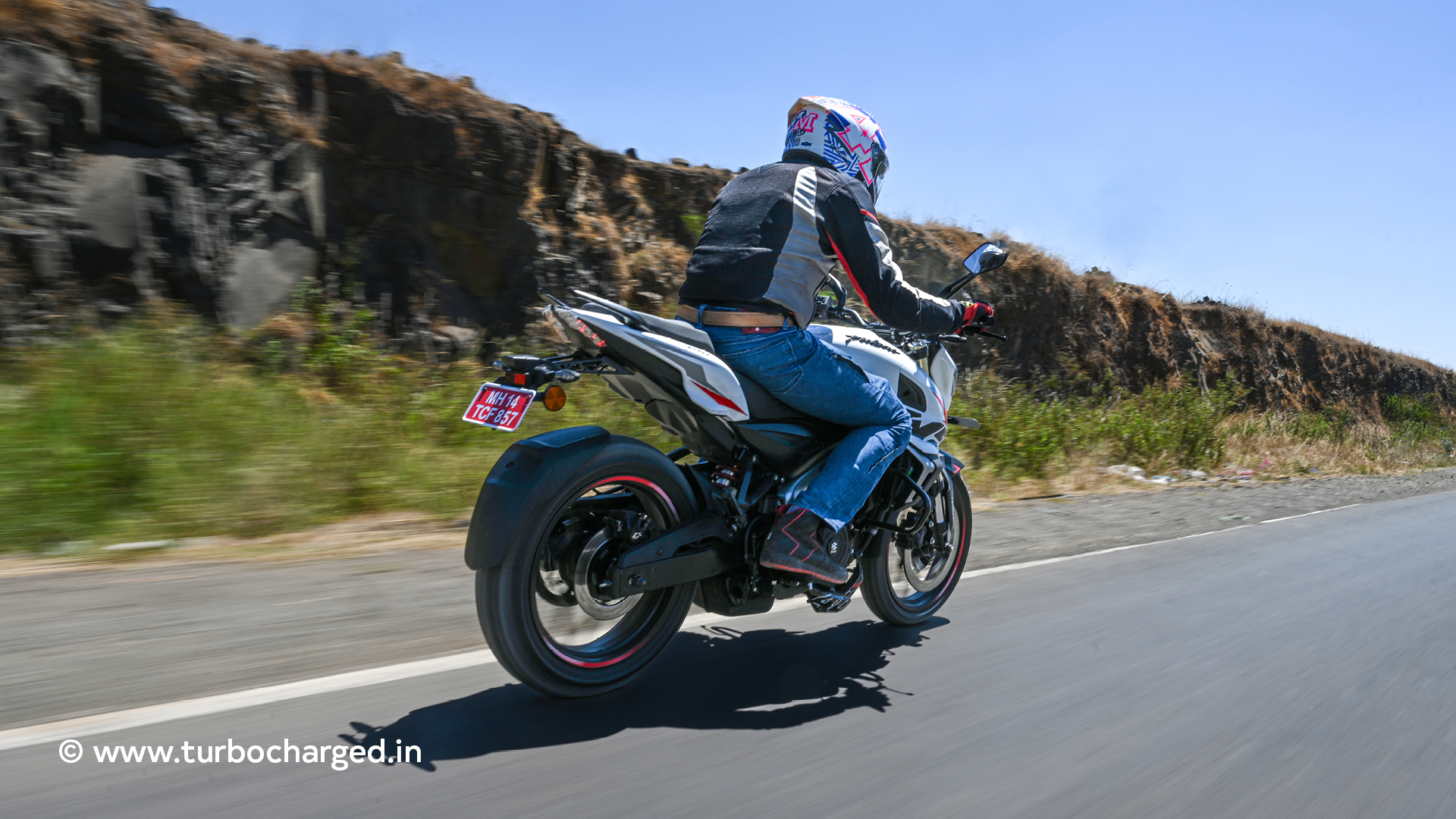
You may have noticed the words ‘cost-cutting’ in this review and wondered how much must that have helped. The answer is – a lot! Bajaj has done well to save cost and priced the Pulsar NS400Z accordingly. At Rs 1.85 lakh ex-showroom, the Bajaj Pulsar NS400Z is the most affordable motorcycle in its segment by a mile. In fact, it is even significantly more affordable than a few 250cc sports bikes. Cost engineering has helped Bajaj keep the Pulsar nameplate alive and kicking and the tradition continues with the NS400Z. When it comes to ‘Affordable performance’, the NS400Z is a Pulsar in the truest sense.


